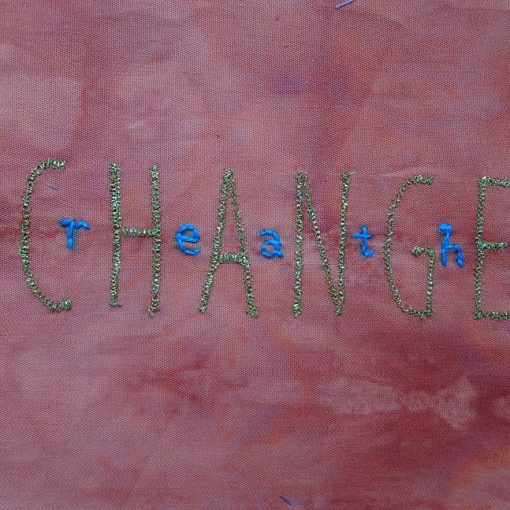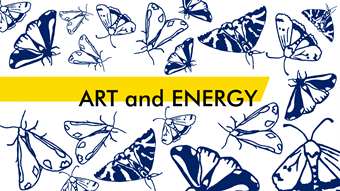By Naomi Wright (The Quarantine Quilt Project Artist, Devon) @naomioutdoors (Twitter)
I’m a person who likes to be social, learn with peers, teach face to face, breathe the same air, experience the same light, energy, spirit (call it what you will) in a space or room. My ideal (I think) is learning or teaching outdoors… I enjoy direct interpersonal exchanges and making progress in a togetherness sort of way.

I’d never have thought that I would enjoy the on-line experience. Well, I have. Well I have mostly, that is. There are those moments when the screen light glares, the concentrated furrowed brows deepen, and it all gets a bit much. Then I switch off (literally and in all other senses). But the point is I can, in a real live room with other people, I can’t take myself somewhere else so easily. People are more forgiving of this switch off/turn off on-line.
What are the positives, then, from learning and teaching on-line?
Currently, I am working with Significant Seams for the Devon Recovery Learning Community to deliver some online art courses. The first thing that is better than I thought it would be is the initial sight of the participants, as they arrive in the online space. It is immediate, direct and connecting. People can turn off their image and their sound if they want to. But mainly this first view and introduction gives all the participants equal space to be there and say what they want to, without the same pressure as you can get around a table. There is a possibility that participants can be more relaxed in their own home, with a screen.

Screen Grabs 
Next comes the sharing and learning of new skills. This, too, had some advantages. Each person is more equal, each shows their recent made thing and talks about it. There are possibilities for private chats while learning and also the development of friendships or more detailed skills sharing. There is also a place for more careful listening. This could be to do with the quality of the sound, fewer distractions, only one person able to speak at a time. I’m not sure. But the impact of carefully listening to each other can bring on a greater sense of being heard. For people feeling very anxious and stressed, this seems to help.
Then there is the gap between sessions, being on line, and with less pressure in some ways, people might be inclined to apply the skills between sessions more. In the classes that I have been involved with, this certainly seems to be the case! It may be the product of Lockdown, I don’t know.
At the end of the course, an invitation to stay in touch and become part of an on-line community seems to be successful. This might be because the whole course has been run in that medium. I definitely feel that same sense of achievement when I think that I have made a difference to somebody… at least as strongly based on activity and expression, and a feeling in my heart and my head.
Then finally, in terms of reach and accessibility, Devon Recovery Learning Community has found that it has gained 100 more members during Lockdown and has more than 40 courses on the go. Communities do not always have access to transport, or it takes too long to get into the nearest town. I have found that the reach is wider and broader – people from miles away can attend and gain from it. So for them, this type of course is a lifeline to the outside world, otherwise not available.
A real handleable Kit, posting useful things for the course with a message, helps people stay with it. I can see that in the future, supporting the basic computer skills required, and the provision of tablets or laptops is necessary for those without. This was happening before COVD19 to a degree through library services. It may have to become a greater priority.
In the end, although I am looking forward to later in the summer being able to meet and learn and teach in the flesh again, I’m sitting at my screen now and counting the blessings of the online approach.





